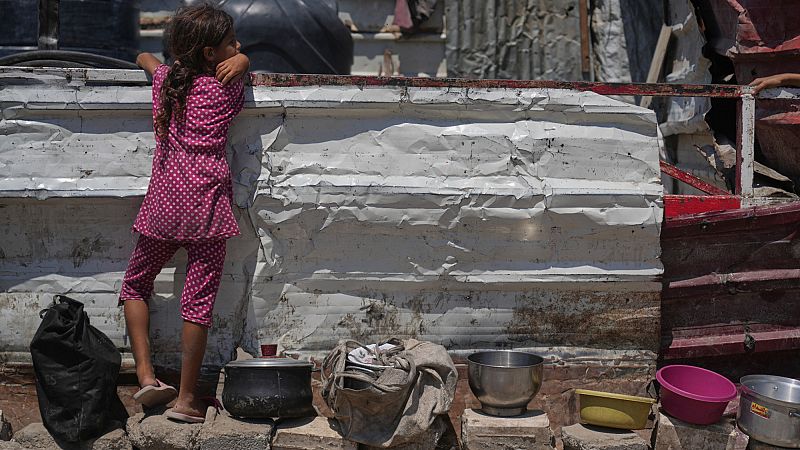UN declares famine in Gaza as more people starve to death

The world's leading authority on food crises said Friday the Gaza Strip's largest city is gripped by famine, and that it is likely to spread across the territory without a ceasefire and an end to restrictions on humanitarian aid.
The Integrated Food Security Phase Classification, or IPC, said famine is occurring in Gaza City, home to hundreds of thousands of Palestinians, and that it could spread south to Deir al-Balah and Khan Younis by the end of next month.
The IPC determination comes after months of warnings by aid groups that Israel's restrictions of food and other aid into Gaza, and its military offensive, were causing high levels of starvation among Palestinian civilians, particularly children.
Gaza City offensive could exacerbate hunger
The grim milestone — the first time the IPC has confirmed a famine in the Middle East — is sure to ramp up international pressure on Israel.
The IPC said hunger has been driven by fighting and the blockade of aid, and magnified by widespread displacement and the collapse of food production in Gaza, pushing hunger to life-threatening levels across the entire territory after 22 months of war.
More than half a million people in Gaza, about a quarter of the population, face catastrophic levels of hunger, and many are at risk of dying from malnutrition-related causes, the IPC report said. Last month, the IPC said the “worst-case scenario of famine” was unfolding in Gaza, but stopped short of an official determination.
Israel disputes report of famine
Israeli Prime Minister Benjamin Netanyahu has denied there is hunger in Gaza, calling reports of starvation “lies” promoted by Hamas. After the publication of images of emaciated children in Gaza and reports of hunger-related deaths, Israel announced measures to let more humanitarian aid in. Yet the U.N. and Palestinians in Gaza say what's entering is far below what's needed.
How a famine is determined
Formal famine determinations are rare. The IPC has previously determined famines in Somalia in 2011, South Sudan in 2017 and 2020, and parts of Sudan’s western Darfur region last year.
The IPC says a famine exists in an area when all three of the following conditions are confirmed:
At least 20% of households have an extreme lack of food, or are essentially starving. At least 30% of children 6 months to 5 years old suffer from acute malnutrition or wasting, based on a weight-to-height measurement; or 15% of that age group suffer from acute malnutrition based on the circumference of their upper arm. And at least two people, or four children under 5, per 10,000 are dying daily due to starvation or the interaction of malnutrition and disease.
Israel’s offensive and its restrictions on access to Gaza have made collecting data difficult.
The data analyzed between July 1 and Aug. 15 showed clear evidence that thresholds for starvation and acute malnutrition have been reached. Gathering data for mortality has been harder, but the IPC said it is reasonable to conclude from the evidence that the necessary threshold has likely been reached.
The IPC warned that a third of Gaza’s population could face catastrophic levels of hunger by the end of September, and that this is probably an undercount.
Alex de Waal, author of “Mass Starvation: The History and Future of Famine” and executive director of the World Peace Foundation, said that had Israel allowed the IPC better access to collect data, a famine might have been determined months ago, which would have raised global awareness sooner.
“Sadly, it seems that it’s necessary for experts to shout ‘famine!’ before the world takes notice, by which time it is too late,” he said.
Israel has restricted aid to varying degrees throughout the war. In March, it cut off the entry of all goods, including fuel, food and medicine, to pressure Hamas to free hostages.
Today

